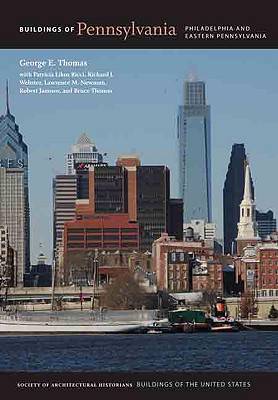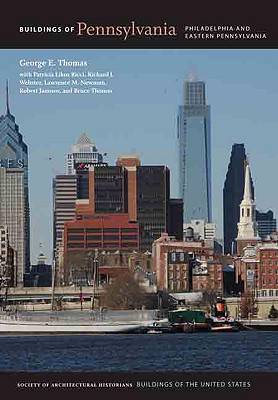
- Retrait gratuit dans votre magasin Club
- 7.000.000 titres dans notre catalogue
- Payer en toute sécurité
- Toujours un magasin près de chez vous
- Retrait gratuit dans votre magasin Club
- 7.000.0000 titres dans notre catalogue
- Payer en toute sécurité
- Toujours un magasin près de chez vous
Buildings of Pennsylvania
Philadelphia and Eastern Pennsylvania
George E Thomas, Patricia Ricci, J Bruce Thomas, Robert Janosov, Larry Newman, Richard J WebsterDescription
This latest volume in the Society of Architectural Historians' Buildings of the United States series follows the Pennsylvania migration narrative in broad swathes: Philadelphia and its surrounding counties of the original Quaker settlement zone, the Piedmont and the German agricultural zone, the Scots-Irish frontier beyond the Blue Mountain, the coal country with its trade connections to New York City and its East European coal miners, and the Northern Tier claimed and settled by New Englanders.
Buildings of Pennsylvania: Philadelphia and Eastern Pennsylvania uses the physical evidence of community plans, building typologies and structural systems, and landscape to gain an understanding of the five great migrations that settled William Penn's Commonwealth. The first settlers were Swedes and Dutch who left traces and buildings near Philadelphia. They were followed by two groups seeking religious freedom--first the English, Welsh, and Scots-Irish members of the Religious Society of Friends (Quakers) and in the early eighteenth century German-speaking Protestants who brought their characteristic planning and building types to southeastern Pennsylvania. A fourth migration of New Englanders in the 1750s claimed the northern third of the state and brought characteristic New England town plans and buildings. The fifth migration of Eastern European Catholics and Jews at the end of the nineteenth century added their highly identifiable domed churches to the coal country. The hybrid vigor created by the interaction of these groups makes Pennsylvania unique among the American colonies and set the stage for the great industrial explosion that made the commonwealth a center of the American Industrial Revolution of the nineteenth and early twentieth centuries. The rising industrial culture found its aesthetic counterpart in the architecture of Frank Furness who turned the dross of industry into the gold of design; his values continued through his students William L. Price and George Howe and on into the late twentieth century in the careers of Louis Kahn and Robert Venturi.
In addition to Philadelphia, the book surveys the rival German-influenced small cities of the Piedmont, the brief but explosive flourishing of wealth in the twin coal country cities, and a host of secondary county towns and villages that carry on vernacular building traditions overlaid with metropolitan architecture serving regional and national clients. This volume, which includes a glossary, bibliography, and over 400 illustrations (photographs, maps, and drawings), is the counterpart to Buildings of Pennsylvania: Pittsburgh and Western Pennsylvania, which covers the western portion of the state.
A volume in the Buildings of the United States series of the Society of Architectural Historians
Spécifications
Parties prenantes
- Auteur(s) :
- Editeur:
Contenu
- Nombre de pages :
- 696
- Langue:
- Anglais
- Collection :
Caractéristiques
- EAN:
- 9780813929675
- Date de parution :
- 15-02-11
- Format:
- Livre relié
- Format numérique:
- Genaaid
- Dimensions :
- 189 mm x 259 mm
- Poids :
- 1569 g

Les avis
Nous publions uniquement les avis qui respectent les conditions requises. Consultez nos conditions pour les avis.






